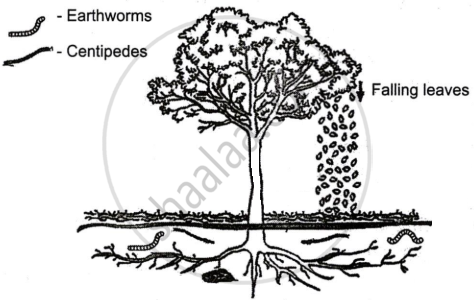Advertisements
Advertisements
प्रश्न
What is a trophic level in an ecosystem? What is 'standing crop' with reference to it?
उत्तर
A trophic level is a level of species in an ecosystem on the basis of the source of nutrition such as producers, primary consumers, secondary consumers, etc.
The producers form the first trophic level as they manufacture food. The primary consumers form the second trophic level, the secondary consumers form the third, and the tertiary consumers form the fourth trophic level.

Standing crop is the quantity or total weight of dried biomass of the organism which is present in a specific location at a particular time.
Each tropic level has a certain mass of living material at a particular time called as standing crop. It is measured as the mass of living organism or the number in a unit area.
APPEARS IN
संबंधित प्रश्न
Explain the role of the 'first trophic level' in an ecosystem.
Solar energy used by green plants for photosynthesis is only
Which of the following are not regulating services of ecosystem services
- Genetic resources
- Recreation and aesthetic values
- Invasion resistance
- Climatic regulation
Discuss the gross primary productivity is more efficient than net primary productivity
Pyramid of energy is always upright. Give reasons.
What will happen if all producers are removed from ecosystem?
The shape of pyramid in a particular ecosystem is always different in shape. Explain with example.
Denitrification is carried out by:
Decomposers like fungi and bacteria are ______.
The diagram given below shows the process of decomposition in the forest ecosystem.
Observe the diagram carefully and answer the questions that follow.

- Why is the breaking down of complex organic matter an important event in the ecosystem?
- The forest soil has a higher humus content than the desert soil. Give a reason to justify this statement.
- Earthworms and centipedes play an important role in the decomposition process of forest ecosystems. At which stage of the decomposition are these organisms involved?
-
The net annual primary productivity of a particular wetland ecosystem is found to be 8,000 kcal/m2 per year. If respiration by the aquatic producers is 11,000 kcal/m2 per year, calculate the gross primary productivity for this ecosystem.
